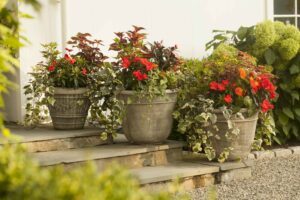Glengate’s Top Three Favorite Natives For Your Garden
As we’ve mentioned in a previous post, planting a variety of flowering natives in your landscape is the best way to attract the beneficial—and beautiful—wildlife that’s crucial to creating your own backyard eco-system (as well aiding the larger ecology of your area). Our local Northeastern pollinators (butterflies, bees, and birds) have evolved alongside our indigenous flora, and need these plants to sustain and grow their declining numbers. There are many flowering natives we can integrate into your property’s planting plans that tolerate all number of conditions—from full sun to shade, sandy to clay soil and more. They not only help our natural environment but enhance the interest and allure of your landscape. Here, three of our top flowering natives for the Northeast.
Milkweed (Asclepias)
It is widely known that monarch butterfly populations are in decline—and one suspected reason is that milkweed, an important host plant for them, has been eradicated by urban and suburban development. Monarch caterpillars feed exclusively on the leaves of asclepias, and their butterflies, as well as those of many other species, rely on them for nectar. Three milkweeds native to the Northeast—common, swamp, and butterfly weed—will augment the natural beauty of your property when utilized thoughtfully. Swamp milkweed, which has pink blooms in late spring, will naturalize quickly in a meadow garden, while orange butterfly weed will fill out perennial borders without taking them over.
Lupines (Lupinus perennis)
There is nothing like spotting lupines in the wild, with their spikes of purple pea-shaped flowers emerging from palm-shaped foliage in summer. And while we usually find this native in a field or meadow, it is an easy one to grow in the garden. Lupines favor loose, sandy soil, so avoid planting them in clay (when in doubt, Glengate’s team can assess your soil). When placed in a favorable location, they are a low-maintenance plant that will allow enjoyment for seasons to come. And, as a native species, the lupine supports wildlife—including around 26 kinds of butterflies in our area.
Blue Wood Aster (Symphyotrichum cordifolius)
If you have a shadier location in your landscape (think under a tree, or at the edge of a woodsy spot), consider the blue wood-aster; it will live just as happily there as in nearly full sun. This perennial pairs well with other natives, such as Joe-pye weed (Eupatorium) and black-eyed Susan (rudbeckia), as much as it does with non-natives like Japanese anemones. Either way, the late-blooming blue wood aster opens its delicate flowers into fall—providing pollinators with food before winter begins, and allowing you extended enjoyment of your property’s gardens.




